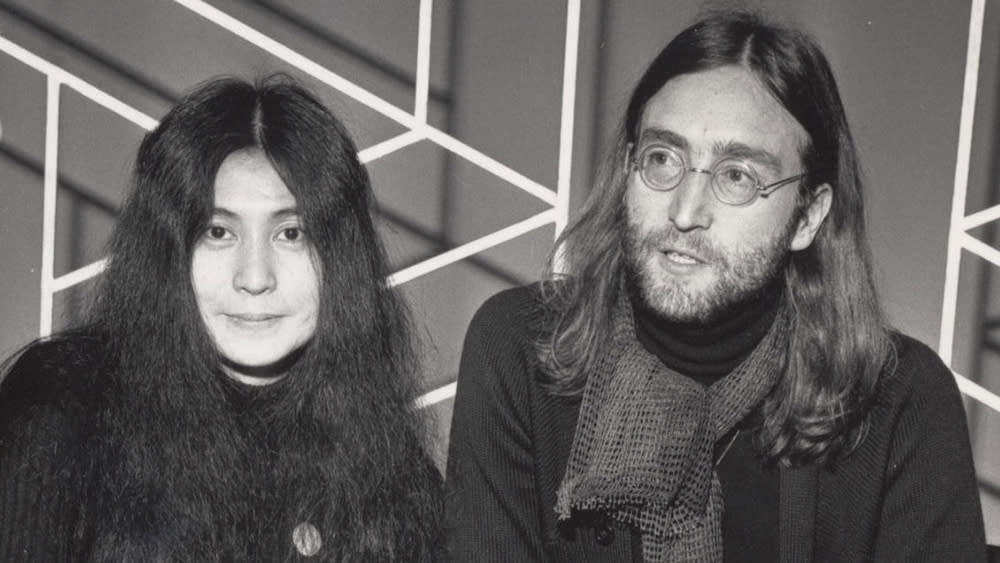John Lennon’s ‘Imagine’ Gets New Life at Grammy Museum Event

Expansive new mixes, and newly unearthed demos and alternates of John Lennon’s chart-topping 1971 album “Imagine” were publicly unveiled before a sold-out audience at L.A.’s Grammy Museum on Wednesday night.
The event at the museum’s Clive Davis Theatre — featuring appearances by remix engineer Paul Hicks, director Andrew Solt, drummer Jim Keltner, and Lennon friend and confidant Elliot Mintz — prefaced Friday’s release of Capitol’s major new boxed set devoted to the album, and Eagle Vision’s DVD and Blu-ray re-release of Solt’s feature documentaries “Imagine: John Lennon” and “Gimme Some Truth.”
The evening aptly began with a clip of Lennon, alone in Ascot Sound Studios at his Tittenhurst Park estate in England, hurling himself into the roaring lead vocal for the key “Imagine” track “Gimme Some Truth.”
No doubt alluding to the political tenor of today’s times, Grammy Museum artistic director Scott Goldman, who served as host for the panel, drew applause from the audience by asking, “How appropriate was that clip?”
Solt marveled, “Seeing John always gets me. … John is so intense.” He described the monumental task of culling two films from some 200 hours of documentary footage “like looking for pearls in the ocean.”
The focus for the program was the imminent “Imagine” box “The Ultimate Collection,” which — while it has been somewhat overshadowed by Apple’s recently announced Nov. 9 re-release of the Beatles’ “White Album” — includes a similar bounty of previously unheard material among its 140 tracks. Like other posthumous Lennon releases, it has been produced and supervised by the musician’s widow, Yoko Ono.
The four-CD/two-Blu-ray super deluxe iteration of the package includes widescreen renderings of both a striking new 5.1 mix (previewed for journalists at a Capitol Records playback in September) and its original Quadrosonic surround mix, plus a rich new stereo mix and a variety of alternate stripped-down versions of the album’s 10 songs.
“It’s intended to be immersive,” said engineer Hicks, who began work on the project in 2016.
One of the set’s major finds played at the museum was Lennon’s original piano demo of “Imagine,” which project engineer Rob Stevens discovered in the musician’s archives. Slathered with heavy slapback echo, it shows that the song was essentially complete in its first version.
Introducing the new “ultimate mix” of “Jealous Guy” — which will also be heard on the box devoted to 1968’s “The Beatles,” in its original demo form with variant lyrics, as “Child of Nature” — Hicks said, “The last thing we wanted to do is make it sound modern … [but] there were quite a few times when we thought the vocals could come up a bit.”
After Goldman pointed out that Lennon frequently manipulated his lead vocals with the extensive use of echo and multi-tracking, Mintz noted, “He didn’t think he had the greatest voice in song. We knew he had the most intimate voice in song. We knew he had the most genuine voice in song.”
Reminiscing about the “Jealous Guy” session, Keltner — whose performance on the song represented his first studio work with Lennon — recalled, “I went into a dream state. I hadn’t been in the studio with a genius before. … I was walking two feet off the ground.”
A playback of the raw mix of Lennon’s assaultive “How Do You Sleep?” prompted a question about the state of Lennon’s home studio, which was still under construction in 1971 as the “Imagine” sessions began. Lennon and Ono’s longtime assistant Dan Richter, who was seated in the audience, supplied an answer.
“In the morning, John said to me, ‘I’m gonna record tonight,’” Richter recalled, adding that he had to work all day on the studio board with a soldering iron to get it into shape. “It worked,” he said, prompting a laugh from the audience.
A Goldman query about Phil Spector — who co-produced “Imagine” and three of Lennon’s other solo albums — prompted a poignant reflection from a obviously affected Keltner, who worked with Spector on such projects as George Harrison’s “Living in the Material World,” Leonard Cohen’s “Death of a Ladies Man,” and the “Concert for Bangladesh” album. The producer is now serving a sentence of 19 years to life for the 2003 murder of actress Lana Clarkson.
Keltner said, “All of that tragedy is so awful, because the Phil Spector that I knew was the genius everybody knew he was. … [But] Phil had a lot of bad habits. With Phil, they took over, and he lost his mojo.”
Mintz, a longtime intimate of Lennon and Ono who hosted radio’s long-running “The Lost Lennon Tapes,” opined that the collaborative relationship between the musician and his wife led to an important evolution in his work.
“He was moving from the Beatles experience to the John-and-Yoko experience, which was liberating to him,” he said. “There was no longer a board. … What you’re hearing is the way John wanted to be.”
Mintz later pinpointed the honesty and candor that have made the musician’s work endure over the years: “We trusted him. We didn’t think he was a showbizzy guy. What he left behind is a sense of authenticity. He was the first to take the makeup off.”
The remixed “Imagine” will also see release tomorrow in two-CD and two-LP packages.
Related stories
Beatles' White Album Outtakes Get Hollywood Premiere at Giles Martin-Hosted Event
John Lennon, Yoko Ono Documentary to Reveal the Untold Story of 'Imagine'
John Lennon's Killer Denied Parole for 10th Time
Subscribe to Variety Newsletters and Email Alerts!

